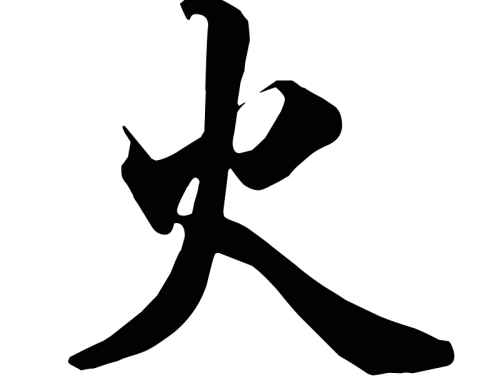Earth follows Fire sequentially in the Five Phase sequence. As all that has been nurtured comes to flower, basks in its own glory and ripeness, and is then harvested… to afterwards decompose to become the same substance that has provided the ground for growth, maturity, and reaping, the cycle begins again; and this very substance once again collects the remnants, and utilizes it as fertilizer for the next cycle of life.
THE ENERGETICS OF THE EARTH PHASE
Of the 5 phases, the Earth phase is often taught in sequence as following Fire, and preceding Metal. However, it is important to remember that at one point, the Earth phase was depicted at the center of the other 4 phases, as it was the foundation around which all of the other phases were dependent, and this resonates with two of the most common qualities of the Earth phase – nourishment and stability. “In its central position the Earth is the pivot for all of the other Elements which encircle and spin around it. It is a place of stability within the body, mind and spirit. From this stable anchor, change and growth can take place. Our food can be transformed and processed by the Stomach and Spleen and turned into qi that nourishes the body, mind and spirit.” The Earth phase in nature is seen as a provider, and the foundation upon which all things grow – it houses seeds within it’s fertile soil and throughout the seasons, is the container within which seeds germinate, sprout, are supported through growth, and from which food is eventually harvested. If there is an imbalance in the Earth or the soil, or it is over-tilled or under nourished, famine can result, or a harvest that is either scanty or isn’t rich in nutrients. Similarly, on an energetic level our Earth element needs to transform the food, water, and air that we take in and create our own very being – our flesh, blood, and qi. If our Earth phase is out of balance we may have symptoms of fatigue, poor digestion, or dampness and turbidity manifesting as unclear thinking or a lack of motivation, while spiritually we may feel that we are not able to reap a harvest in our lives as our efforts and energies haven’t culminated in creating what we set out to, inevitably leading to feelings of dissatisfaction or a lack of stability, center, or a sense of being off balance or ungrounded. The Earth phase is also often compared to a loving mother, providing us with support, stability, and is the source of nourishment for us when we are young, and also a guiding and supportive force for us throughout our lives. Many times when there is imbalance, there will be a disconnect from our mothers, an inability to connect or receive nourishment from them, or various difficulties within other relationships that provide nourishment, warmth, and stability. The resonances that belong to the Earth phase include the color yellow, such as the yellow of millet or of a field of grain ready for harvest.[ii] The tone heard in the voice is one that sings, or that has a variation in pitch and tone – such as one that a person would have when consoling a child or someone who has been injured or suffering from uncertainty and anxiety. If one sings consistently, yet outside of a nurturing context, this along with other diagnostic symptoms may indicate an imbalance within the Earth phase. The Earth phase corresponds with a fragrant, sticky sweet smell, and the sense organ is taste, our mouths the orifice to which it opens. The emotion and spirit that correspond to the Earth phase are thought, intellect, and sympathy. Imbalances emotionally can appear as over-thinking or excessive worrying and rumination, or an imbalanced ability for one to care for them self or to be either over-caring or overly un-sensitive toward the needs of others. For instance, when the natural flow of giving and receiving sympathy is not supported by a balanced Earth, patterns such as excessive desire for sympathy and support can emerge; the rejection of any help, support, or sympathy from others; excessively feeling and giving sympathy; or being completely untouched or unaffected by others’ distress.[iii] The organs and Officials that correspond with the Earth element are the Spleen and the Stomach. “The Stomach and Spleen are responsible for the storehouses and granaries. The five tastes stem from them.”[iv] Some of the Yin and Yang dichotomies between the Spleen and Stomach are as follows: the Spleen official holds the yin aspect of the Earth phase, while the Stomach is Yang; the Spleen loathes Dampness, loves Dryness, while the Stomach loathes Dryness, and prefers to be moist; the Spleen qi ascends to bring clear yang energy to the viscera and orifices, while Stomach qi descends to carry the turbid down and out of the body. The Spleen’s primary function is “transformation and transportation” of water and nutrients, as well as of thoughts and emotions from both the exterior and interior of our world throughout our body and mind in service of our Heart and entire being. Additionally, the Spleen is responsible for holding blood within its vessels, to contain and nourish the nutrient rich river of blood within us, nourishing each and every organ. Dysfunction in the Spleen can manifest in a myriad of ways – as various bleeding disorders, either in excess as profuse bleeding, or in deficiency, where bleeding occurs from the spleen not holding the blood properly in the vessels; similarly, if the transportation and transformation mechanisms aren’t working properly due to imbalances within our environment or the communication of the other phases, then the metabolic fire can diminish, and dampness can stagnate leading to mental fogginess, difficult concentration, and lethargy. The Spleen also holds organs in their correct place, and a sinking of spleen qi can lead to Prolapse. The following accounts the meridian pathway of the spleen meridian and reflects on the spleen’s role of bringing clear nourishment to each aspect of our being: The Spleen channel begins at the medial nail point of the big toe. It travels along the medial edge of the foot and passes in front of the medial malleolus. Then it ascends the medial surface of the leg, uniting with the liver and kidney channels at Sp 6, “three yin crossing,” The channel continues to rise up the medial edge of the tibia and gastrocnemius to the inguinal region, passing through Sp 12 and Sp 13. Here the pathway travels internally toward the median line to CV 3 and CV 4. It then runs laterally again to emerge superficially and travel from Sp 14 to Sp 15. Now the channel travels internally back to the median line to join with CV 10. From here the internal branch enters the organs of the spleen, pancreas, and stomach. Another internal branch leaves from CV 10 to enter the heart and connect with its meridian. From CV 10 the channel moves laterally to become superficial again at Sp 16. The channel ascends the thorax to unite with Lv 14 and Gb 24, the mu points of their respective officials. The channel continues to ascend, reaching Sp 20 in the second intercostals space. From here the channel descends laterally to Sp 21, the exit point. From Sp 21 the channel travels internally to ascend the esophagus and branch throughout the tongue. As stomach qi descends, the nutritional content abstracted from food rises to nourish the heart as well as the rest of our being. This connection is embodied as the spleen channel ends at Sp 21, the great luo connecting point. This p0oint sends collaterals to nourish our entire being as though we are held in a motherly embrace. From Sp 21, qi exits the spleen meridian to flow to the entry point at Ht 1. Here healthy blood and qi return to the heart, truly nourished by the fruits of its labors according to the earth’s virtue of reciprocity. In this way the heart as our spiritual center is strengthened.[v] The complement to the Spleen is the Stomach, whose main role is to act as a storehouse for our food, and is the source of our nourishment. Prior to the Spleen’s role of transforming and transporting nutrients, our food and drink must be broken up in our mouths and then transferred to the stomach where it is said they then “rot and become ripe.” A common analogy that is used for the Stomach is that of a properly tended compost pile. “J.R. Worsley compared the Stomach’s rotting and ripening function to a concrete mixer. In order to make good concrete, people need the right ingredients and a good mixer. If they have the correct amount of cement, sand, and water and mix it well, it will make strong concrete that is capable of building a sturdy building, which will last for hundreds of years. If however, it is the wrong consistency or poorly mixed, the concrete will be of poor quality.”[vi] While it is important to eat high quality food and drink pure water, we also need to be able to have a strong Stomach official in order to digest not only our physical food, but also our mental and spiritual ‘food’ as well. The adage that our Stomach’s are our second brain is applicable here, as the Stomach official must process our emotions just as much as our Hearts, and also more so – to offer the properly digested nutrients or emotions to our Hearts for nourishment. Stomach qi is also understood to descend, and imbalances in the direction of Stomach qi can lead to nausea, vomiting, acid reflux, hiccups, or excessive burping. Additionally, the Stomach filters fluids, and prefers to be moist. Improper balance of body fluid can often be traced to an imbalance within the Stomach. While the Stomach and Spleen share opposing roles, they work synergistically together in the digestive process physically, mentally, and emotionally to provide us with a foundation for nourishment, and as our steady center and foundation. The Stomach channel ends where the Spleen channel begins. Following is the stomach meridian’s trajectory: The Stomach channel begins internally at LI 20, where it rises along the midline of the nose and joins BL 1 at the medial canthus of the eye. The channel descends laterally along the inferior border of the orbit to become superficial at its entry point, ST 1. The channel then runs through ST2, 3 and 4, descending in a straight line directly under the pupil of the eye. An internal branch leaves from ST 3 and moves medially to DU 26 and then turns laterally again to join ST 4 at the corner of the mouth. From here the internal branch travels medially again to join CV 24 under the center of the lower lip and rejoins the main meridian again at ST 5. The meridian then ascends through ST 6 and 7, passing through GB 3, 4, 5, and 6 on its way to ST 8. Passing through ST 8 this branch terminates at GV 24 on the midline of the forehead. The superficial pathway leaves ST 5 to descend the mandible and continues down the side of the trachea to the medial end of the clavicle. The channel then runs laterally to CV 12, where it divides into superficial and internal paths. The superficial path descends the chest in line with the nipple to the fifth intercostal space, where it turns medially and continues down the abdomen to ST 30. The internal path leaves ST 12 to travel down the abdomen to ST 30. The internal path leave ST 12 to travel through the chest, penetrate the diaphragm, and enter the organ of the stomach at the level of CV 13. A branch of the internal channel leaves from here to connect with the spleen. The internal channel continues from CV 13 to reunite with the main channel at ST 30. The single path now descends the interior surface of the leg along the lateral edge of the tibia. At ST 39 the channel ascends laterally to ST 40 and then descends to the center of the ankle joint at ST 41. It then travels along the dorsomedial aspect of the foot between the second and third metatarsal bones to terminate at ST 45, the lateral nail point of the second toes. An internal branch leaves ST 36 traveling laterally to the main pathway to end at the lateral nail point of the middle toes. Another internal branch leaves from ST 42, the channel’s exit point, and connects to the entry point of the spleen meridian at SP 1, the medial nail point of the big toe.[vii] [i] Hicks, Hicks, and Mole. Constitutional Five Element Acupuncture. 108 [ii] Hicks, Hicks and Mole. Constitutional Five Element Acupuncture. 108 [iii] Hicks, Hicks, and Mole. Constitutional Five Element Acupuncture. 111. [iv] Larre and Rochat de la Vallee. The Secret Treatise of the Spiritual Orchid. 97. [v] Jarrett, Lonny. The Clinical Practice of Chinese Medicine. 655-656. [vi] Hicks, Hicks, and Mole. Constitutional Five Element Acupuncture. 119. [vii] Jarrett, Lonny. The Clinical Practice of Five Element Acupuncture. 608. Image credit: kentoh / 123RF Stock Photo



